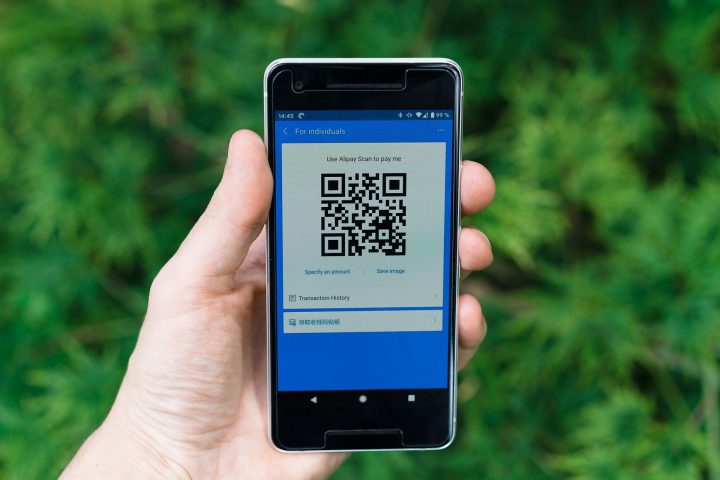The Requirements Committee dedicated the 3rd of November meeting to the multimodal ticketing pre-study almost entirely, with Requirements Committee Chairman Guido di Pasquale, Minna Soininen, director of the Finnish Public Transport Association, and John Peter Veldkamp Manager Mobility Solutions, Payments, and Innovation at Ximedes sharing their insights on the topic.

Paving the way for MaaS
Requirements Committee Chairman Guido di Pasquale gave an overview of multimodal ticketing from a general perspective and from the standpoint of UITP, where he commented that multimodal ticketing paves the way for Mobility as a Service. He talked about that UITP and others view Public Transport as the center and backbone of MaaS and that it is essential for ITxPT to analyze its role and function in the ecosystem. Many different standardization bodies are working intensely with the issues of interoperability needed for MaaS.
A new definition of Public Transport
UITP works on a definition of MaaS and, in doing so, they also aim to rethink the function of Public Transport. It needs to complement the traditional modes of transport, like buses, trams, and trains, with more flexible solutions for the end-user. Automated vehicles and services will be a part of this. With Public Transport as the backbone of MaaS comes demands on integrated planning, booking, payment, and tickets covering all modes of transportation to offer an attractive and cost-effective alternative to private cars. An important aspect is to put the user in the center of mobility and focus on transporting people and not vehicles.
Hot e-ticket topics
Guido di Pasquale also mentioned some hot topics in the e-ticket world:
• Privacy – the principle of anonymous movement
• Security – the eternal fight against fraud
• Trust – essential in cooperation schemes
• Retail – commercial activities – bundled products?
• Third parties – independence and revenue protection
• Simplicity – ease of use must match other online retail and apps
• App-based ticketing – smartphones
• Who owns the customer?
Two essential aspects of the transition to a multimodal ticketing system and eventually a complete MaaS system are understanding what technologies are available and required and how to handle the transition from a legacy environment.
Minna Soininen – Finnish Public Transport Association
Issues to think about
With the experience from all over Finland of ticketing integration work, Minna Soininen, director of the Finnish Public Transport Association, had valuable insights to share. One of the most important is that interoperability is not only technology. There are other factors to handle, like sharing revenue between commercial and publicly-funded transport when the prices differ and how to deal with different systems for how long tickets are valid. How do you package products for frequent use? How can you collaborate without interfering with competition regulations? How can you comply with GDPR and still share information and be interoperable with everybody, and how do you handle a scattered and small market?
Hard to integrate many actors
One of the challenges for the ticketing integration projects in Finland is integrating the back-office systems of different transport providers. They found that it is impossible to let ten back-office systems communicate with the same onboard equipment. Cybersecurity is also an essential aspect, for example, when specifying the internal network in connection to contactless payment and other payment processes.
Another issue they face is that many public transport authorities and operators in Finland are small and medium-size, which means they often have limited resources to invest in advanced technology solutions. Therefore, she suggested that a good starting point would be deciding the minimum ticketing solution requirement to join the multimodal ticketing platform.
John Peter Veldkamp – Ximedes
Challenges and standardization need
John Peter Veldkamp from Ximedes joined the meeting to share a supplier’s perspective. He specified the two primary purposes with his presentation: sharing insights into the challenges of multimodal ticketing and showing the need for standardization.
He talked about a barcode-based solution in the Netherlands that will soon cover the whole country. He also presented MaaS platform architecture from the MaaS4EU project as an example of that one payment covering all travel modes sounds easy but is not that straightforward to achieve. It gets rather complicated when providers, users, storages, financial transactions, and other aspects come into play.
Technology is not the challenge
Like Minna Soininen, John Peter Veldkamp stated that technology is not the biggest challenge. The fragmented situation with countries, regions, mobility types is one hurdle. Other issues are reconciliation, how to divide funds and refunds, and the lack of standardization of the form, shape, and content of e-tickets.
Should you check in and out of the journey like in the Netherlands, or should you rely on inspections like Germany, where the ticket needs to be readable online and offline? Both models face their challenges.
He suggested that the solution should be hardware-independent, avoid vendor lock-in and be customer-centric. He also stated flexibility for future systems and added value for all involved parties as essential aspects.
In conclusion, the meeting gave valuable inputs for the continuing work within the Requirements Committee and the pre-study working group.
